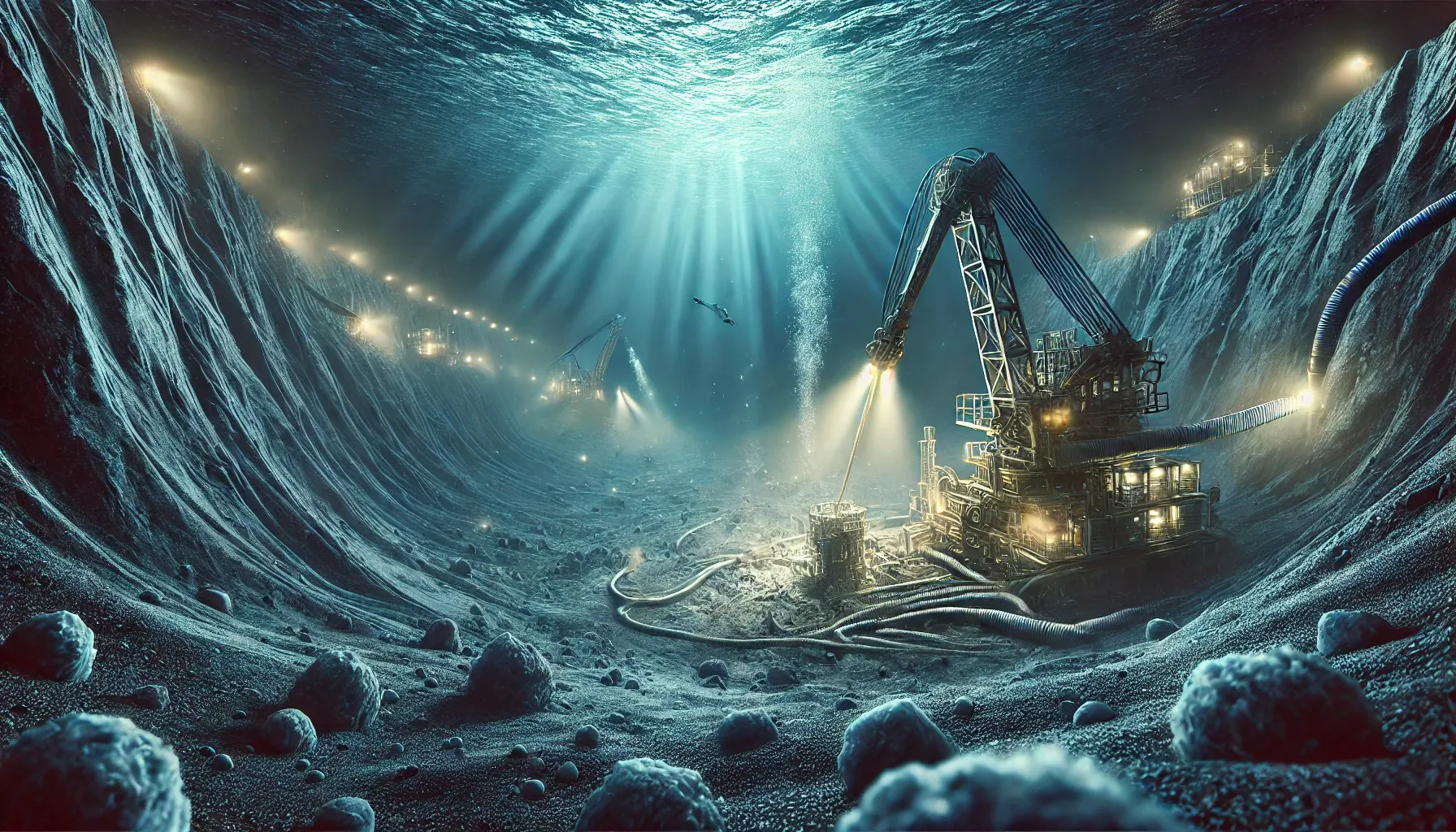UPSC
The Hindu Briefs
Deep-Sea Mining: Risks to Ocean Ecosystems
Last Updated
26th March, 2025
Date Published
26th March, 2025
Share This Post With Someone

Context:
Published on March 26, 2025, this article explores the environmental threats posed by deep-sea mining, particularly to the midwater zone of the Pacific Ocean. As the demand for metals like nickel and cobalt rises for technologies such as batteries and smartphones, the ecological consequences of mining polymetallic nodules from the seafloor are under scrutiny, with critical decisions looming at the International Seabed Authority in July 2025.
Key Information Points:
- Resource Target: Polymetallic nodules, rich in metals (manganese, nickel, cobalt, copper) vital for batteries, smartphones, and renewable energy tech, lie scattered on the Pacific seafloor southeast of Hawaii.
- Mining Process: Collector vehicles scrape nodules, stirring sediments, which are piped to ships; waste slurry (water, sediment, crushed nodules) is then dumped back into the midwater zone at proposed depths of around 4,000 feet (1,200 meters).
- Midwater Zone: Begins 650 feet (200 meters) below the surface, encompassing twilight and midnight zones; a biodiverse ecosystem with glowing creatures thriving in darkness, supporting whales and fish like tuna.
- Ecological Threat: Sediment plumes from mining could disrupt midwater food webs, clog feeding mechanisms of marine life, alter behaviors, and spread widely due to ocean currents, risking broader ecosystem damage.
- Scientific Uncertainty: A 2023 Clarion-Clipperton Zone study found 88-92% of species are new to science; the midwater zone’s dynamics and plume behavior remain poorly understood.
- Past Research: 40 years of studies show nodule removal harms seafloor habitats, but midwater impacts are less studied, raising concerns about irreversible damage to an ecosystem humanity barely comprehends.
- Regulatory Gap: Current mining rules focus on seafloor impacts, neglecting midwater ecosystems; the International Seabed Authority (ISA) will decide mining regulations, waste discharge depths, and environmental safeguards in July 2025.
- Global Stakes: The Clarion-Clipperton Zone, a key mining target, holds vast mineral wealth, but its ecological importance demands caution before commercial operations begin.
- Expert Call: Oceanographers urge comprehensive risk assessments to weigh resource needs against potential collapse of fragile deep-sea ecosystems.
Key Terms:
- Polymetallic Nodules: Metal-rich deposits on the seafloor, targeted for mining.
- Midwater Zone: Ocean layer from 650 feet downward, vital for global marine life.
- Sediment Plumes: Clouds of debris from mining, potentially disrupting ecosystems.
- Clarion-Clipperton Zone: Pacific region rich in nodules, a focal point for mining.
- International Seabed Authority (ISA): UN body regulating deep-sea mining.
- Biodiversity: Variety of life forms, at risk from mining in unexplored zones.
- Food Webs: Networks of feeding relationships, vulnerable to plume interference.
Link To The Original Article – https://www.thehindu.com/sci-tech/science/deep-sea-mining-threatens-sea-life-by-dumping-debris-in-midwater-zone/article69376311.ece